田黎明,农历乙未年(1955年)生于京师,籍贯安徽合肥。己巳岁考取卢沉教授之门下,辛未岁得文学硕士学位,工于中国画山水人物之道。
Tian Liming, born in 1955, hails from Hefei, Anhui. In the year of Jisi (1989), he was accepted as a student by Professor Lu Chen, and in the year of Xinwei (1991), he earned a master's degree in literature. He is skilled in the art of Chinese landscape and figure painting.
论自上世纪八十年代以来之水墨试验,无不提田黎明。田公虽非观念之极致,然其艺术语言与绘画秩序已成。其作品之朴素风雅,乃中国传统人文精神于当代之契合与写照。若论艺术样式之探索,田黎明诚为创造性之“实验”者,然其气质、绘画方式与艺术态度,更类正统画家、旧派文士。重生命体验,尚文化品格,崇“自然信手拈来”之绘事,其于艺术之态度,与古之文士无异也。
Discussing the ink experiments since the 1980s inevitably involves Tian Liming. Although not the most extreme in concept, his artistic language and painting order have matured. His works' simplicity and elegance represent the convergence of traditional Chinese humanistic spirit with contemporary life. In terms of artistic exploration, Tian Liming is a creative "experimenter," yet his temperament, painting style, and artistic attitude are akin to traditional painters and old-school literati. He emphasizes life experience, values cultural character, and esteems the "natural and spontaneous" painting method, reflecting an artistic attitude similar to ancient literati.

艺术与生活合一,乃中国人文传统。今现实中,此理想渐离吾辈。田公以实践,证人文于当代之价值,使“水墨”与人物、事件、生存环境重归和谐。其画中乡村少女、都市女子,宛如邻里、同事、过客。吾熟悉其笑容、忧伤,及心底隐秘。田公创新图式,予吾新视觉,然其观照与关怀,纯正中国风。其表现手段与气质一致,近其画,亦如触及艺者心灵。
The integration of art and life is a Chinese humanistic tradition. However, in today's reality, this ideal is gradually drifting away from us. Tian Liming's practice demonstrates the value of traditional humanism in contemporary contexts, harmonizing "ink painting" with people, events, and environments. His paintings of village girls and urban women resemble our neighbors, colleagues, and passersby. We are familiar with their smiles, sorrows, and hidden secrets. Tian innovates in visual patterns, offering new perspectives while maintaining genuine Chinese sensibility. His expressive techniques align with his temperament; approaching his paintings feels like touching the artist's soul.
田黎明之创作,源于日常见闻思积,偶于生活一现象或画面效果中得悟,令人激动不已。积压已久之思,终得线索,遂条理分明。其忠实于生活,诚实表达所见所感,虽平易粗浅,然实在可感。明代王履《华山图序》云:“吾师心,心师目,目师华山。”生活如语库,予感予觉,教人表达。然生活非直线,乃曲折复杂,需“搜尽奇峰打草稿”,方显其真。黎明之创作艰辛,正如其《碑林》,蕴积久则多年,短则一瞬,此过程极为痛苦。
Tian Liming's creation stems from daily observations and thoughts. Occasionally, an insight from a life phenomenon or an accidental effect in his work brings immense excitement. Long-standing ideas finally find a coherent thread and become clear. He remains true to life, honestly expressing what he sees and feels, even if the simplicity might seem crude; it is genuinely perceptible. Ming Dynasty painter Wang Lü said in the "Preface to Mount Hua": "I take my heart as a teacher, my heart takes my eyes as a teacher, and my eyes take Mount Hua as a teacher." Life is like a vocabulary, providing feelings and insights that teach expression. However, life is not linear but complex and winding, requiring extensive exploration to reveal the truth. Tian's creative process, like his work "Forest of Steles," involves prolonged accumulation over years, sometimes achieving clarity in an instant, a highly arduous journey.
田黎明于《碑林》之前亦作类似画,然未臻心手合一。多次尝试,由碎至整、由小至大,终于《碑林》得之。后作《碑文》,虽有所感,然成见未尽诚实,画面亦欠实在。田黎明忆西南写生,遇一老者,虽画成,然神韵未显。于黄山写生,速写囊括峰峦,然丢失真意。仿他人笔调,渐觉不真,然习惯难改,常恨言浅意深。作画时,欲传感觉于画面,画面却不领情,终顺其自然。
Before "Forest of Steles," Tian Liming created similar works but had not achieved harmony between mind and hand. Through multiple attempts, from fragments to wholes, from small to large, he finally succeeded with "Forest of Steles." Later, he created "Stele Inscriptions," which, despite some insights, lacked complete honesty and authenticity. Tian recalls sketching in the southwestern mountains, where he met an old man. Although he completed the sketch, it did not capture the man's spirit. Similarly, his sketches from Mount Huangshan included peaks and ridges but missed the true essence. Mimicking others' styles felt increasingly insincere, yet the habit persisted. He often lamented that his words fell short of his intentions. While painting, he struggled to convey his feelings to the canvas, which sometimes resisted, ultimately following its natural course.




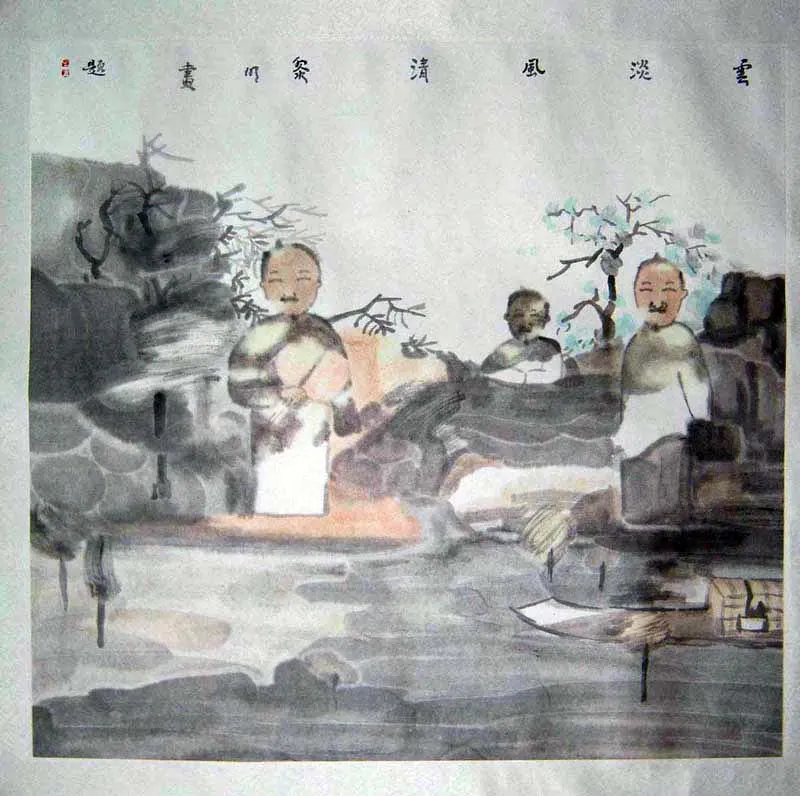
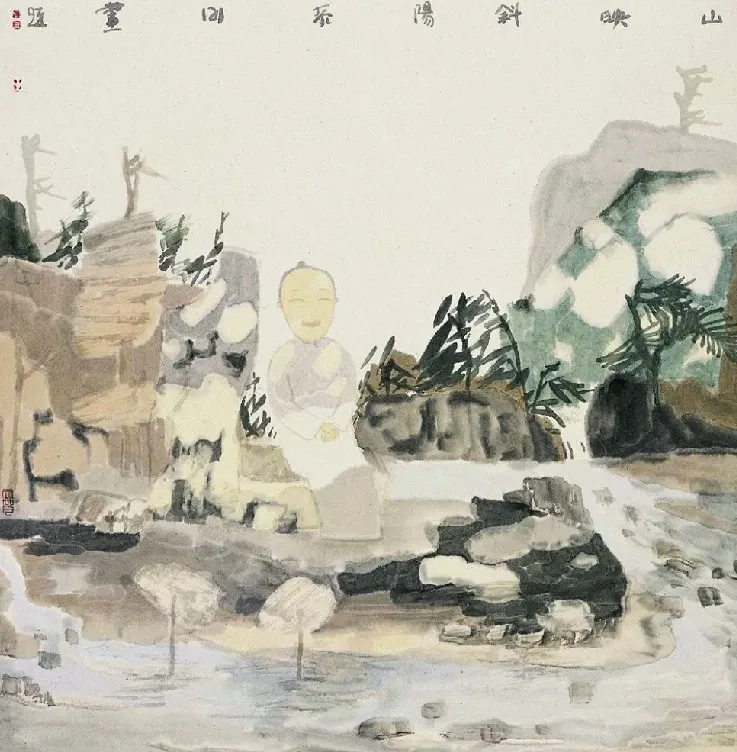
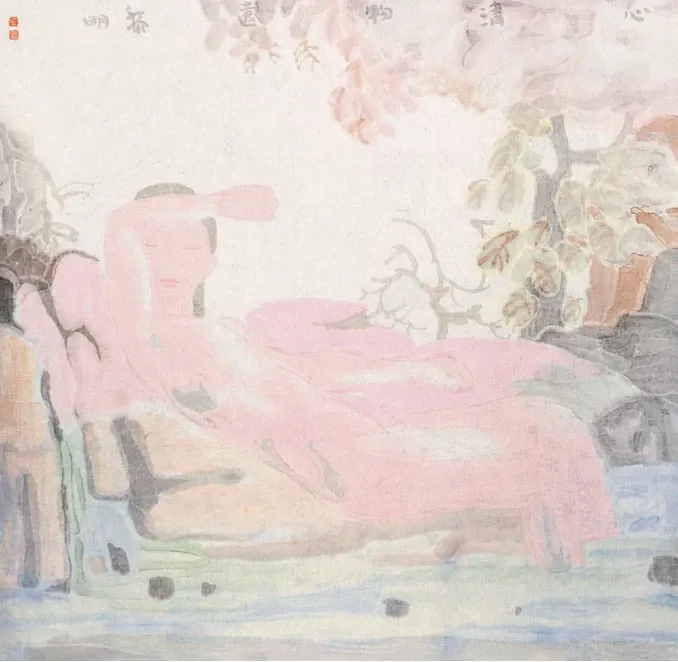
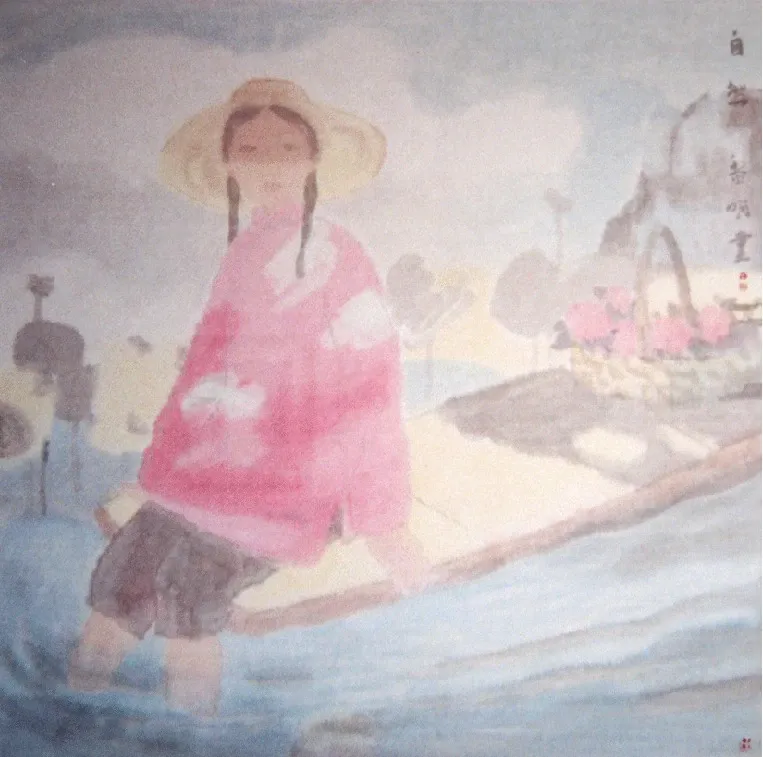
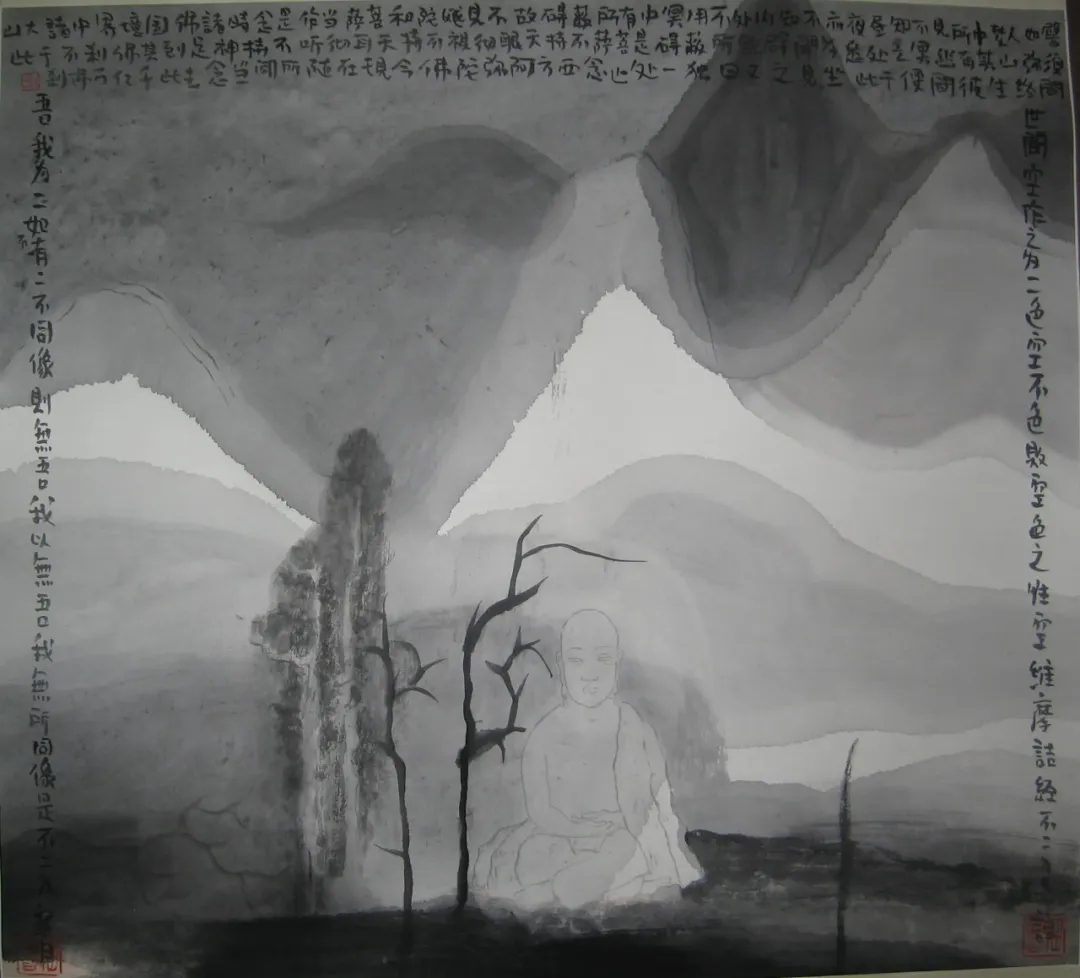


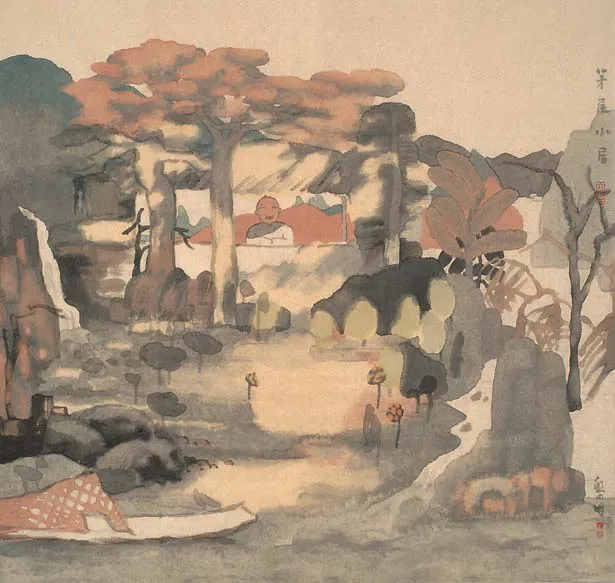
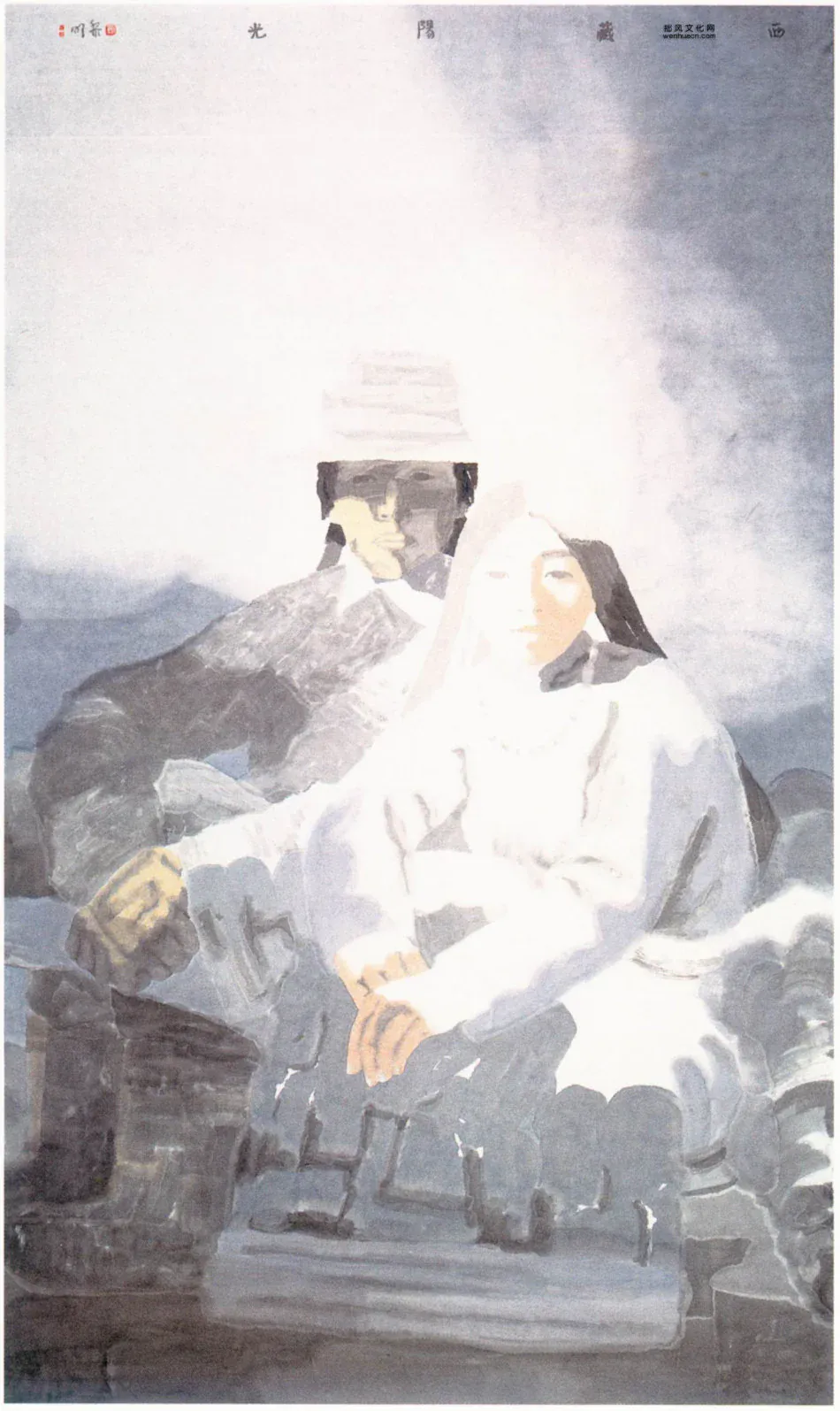
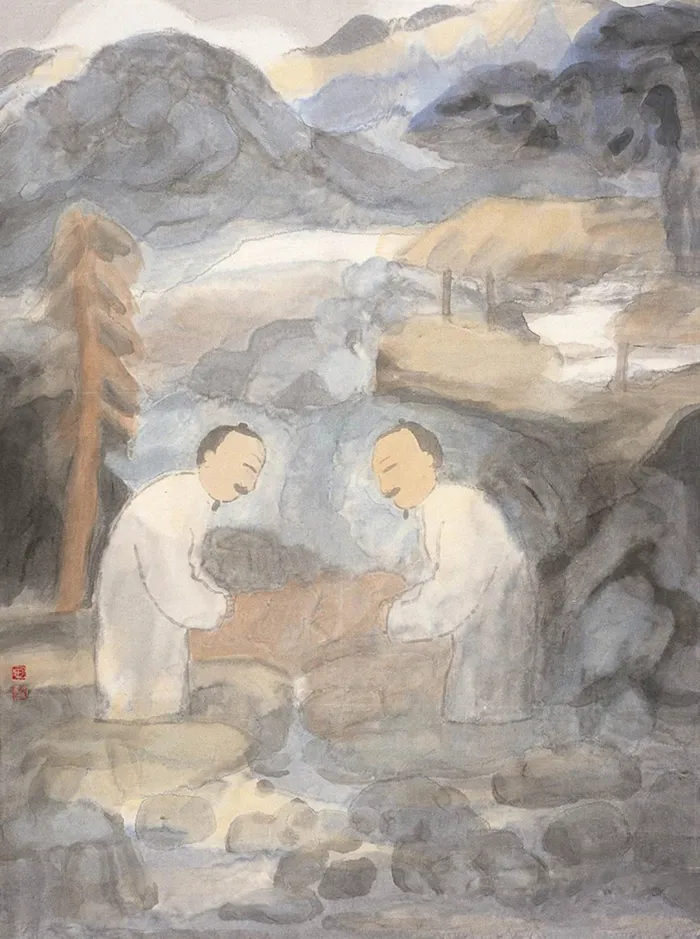



画事劳心,盖因感觉飘忽,画语纷乱;自寻烦恼,生活之感于画中失之;痛苦之至,心有余言而不达。损失再三,岁月与经验问我:若能清晰表达思想,不忘其源自幼时。循自然引导,谨守艺术规矩,于平凡生活与画面之酸、涩、苦、香中积累感悟。朱熹云:“知觉因事因物皆可知,觉则自心有所悟。”于生活与画面中理会细碎常理,由小见大,触近思远,积累耐性。庚生曰:“人之内发者曰情,外触者曰感,应感而生,是曰与会。”平常之感乃情之本,以情见语,语中见性。日常感触于古今、常非常、得失之间,随前后、虚实、终始之过程,时爽快清朗,时含混茫昧。往事如影相随,昨日即景生情,今时触目皆是,偶合渐聚为意象,乃非说不可之时,似一池盈水,满则渐溢,厚积薄发,此刻语言至诚可信。
Painting is laborious, as the floating feeling leads to chaotic expression; it invites self-inflicted troubles when life's sensations are lost in the canvas; it is painful when words in the heart cannot be expressed. After repeated losses, time and experience ask me: if you can clearly express your thoughts, do not forget it began in childhood. Following nature's guidance, strictly adhering to artistic principles, and accumulating insights from the bitterness and sweetness of daily life and the canvas. Zhu Xi said, "Perception is known through things, but realization comes from within the heart." Understanding small truths in life and on the canvas, seeing the large from the small, and thinking far from the near, build patience. Gengsheng said, "Inner expressions are called feelings, outer contacts are called sensations; responding to sensations produces unity." Ordinary sensations are the essence of feelings, expressing feelings through words, showing nature in words. Daily sensations between ancient and modern, common and extraordinary, gain and loss, through the processes of past and present, illusion and reality, beginning and end, sometimes clear and bright, sometimes confused and obscure. Past events shadow us, yesterday's scenes evoke emotions, today's sights are everywhere, occasionally merging into a unified image, it is the time to speak out. Like a filled pool overflowing, accumulated deeply but expressed lightly, sincere and trustworthy at this moment.
田黎明之画,重气象而非形象,此其艺术整体之源也。专注形象,易陷西方绘画窠臼,偏于造型与视觉之分析,终致理性科学之形式语言,及现实主义之再现。气象者,境界也,乃人生经历与文化积淀于特定时空之凝结,因艺术家之直觉与技巧所照,遂成画面之意蕴,难以言传。田氏将东方宁静之造型与水墨变化之语言相结合,使主观能动与水墨自然生发于宣纸,动静相生,含蓄隽永,此其人物画之旨归与理想也。
Tian Liming's paintings emphasize atmosphere over form, which is the source of his artistic integrity. Focusing solely on form can lead to the pitfalls of Western painting, emphasizing modeling and visual analysis, ultimately resulting in rational, scientific formal language and realistic representation. Atmosphere, a realm, is the condensation of life experiences and cultural accumulation in specific historical and spatial contexts, illuminated by the artist's intuition and skill, forming indescribable rich meanings in the painting. Tian combines the tranquil Eastern modeling with the dynamic ink language, merging subjective initiative with the natural development of ink on rice paper, achieving a balance of movement and stillness, subtle and profound. This is the direction and ideal of his figure painting.
田黎明之作,清新明快,有韵有趣,味鲜趣真,生命力旺。其朴素风尚,亦为中国传统人文精神于当代生活之写照。
Tian Liming's works are fresh and bright, rhythmic and interesting, with genuine charm and strong vitality. His simple style also reflects the traditional Chinese humanistic spirit in contemporary life.
责任编辑:苗君